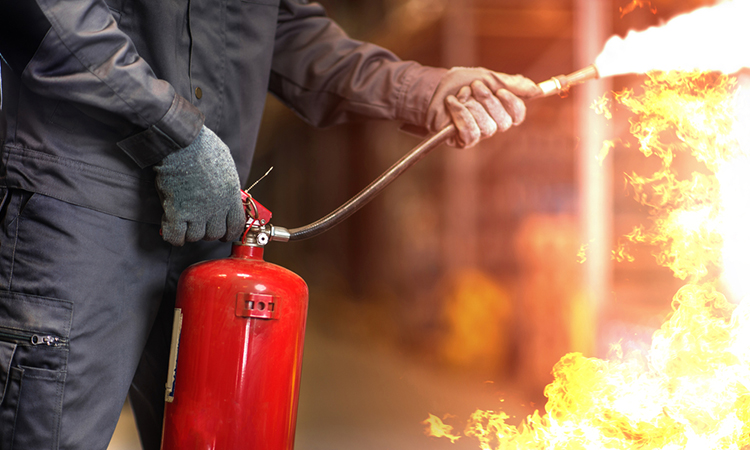
Large infrastructure projects often suffer from significant under-management of risk during the life cycle of a project, reason being management of risk isn’t properly accounted for in their planning. There are several risks that prove hazardous to a building/infrastructure such as improper management of resources, electricity, drainage system, lifts etc.
Out of all these factors fire is the most talked about and common sight for proving hazardous for a building.
In any incident, as indicated by Occupational Safety and Health Administration (OSHA), work place and environment kill 200 workers and injure almost 5,000 workers every year and costs organizations more than $2.3 billion in property damage. Blasts and fires represent 3% of work environment wounds and have the most noteworthy loss rate of all likely work environment mishaps.
Unexpected explosions and fires in the building are frequently caused by several risk factors such as faulty gas lines, improperly stored combustible materials, poor pipefitting or open flames. These incidents cause damage to the respiratory system, varying degrees of burns and potential disfigurement.
Below are 11 ways outlined for keeping your building safe from fire:
- Accessibility: Never obstruct the boards, which are utilized to close down power in a crisis, with materials or other gear. Likewise, never square sprinklers, firefighting gear or crisis exits and watch clearances while stacking materials.
- Fire Drills and Evacuation Plan: Conduction of fire drills at least twice a year should take place and have a designated spot where representatives will meet once they leave the building. Allocate workers to be fire drill chiefs and ensure everybody comprehends what the best possible methodology is. Audit your arrangement with your neighbourhood fire organization to evaluate its viability.
- Fire Monitoring System: Fire monitoring systems are beneficial to a building in several ways. It will give you peace of mind knowing that if a fire occurs, you will have an immediate response to the emergency, no matter the time of day. It can be especially useful to have fire alarm monitoring when the building is unoccupied because emergency agencies are alerted even when no one is in the building which ensure that your property is being protected at all times.
- Emergency Numbers and Proper Signage: Crisis telephone numbers, just as your organization address, ought to be posted by the telephone station for fast access. Create addition data sheets in the local dialects for your workers. Ensure you have exit signs introduced in your office and a flame clearing plan in case of an emergency.
- Fully Charged Fire Extinguishers: Check fire extinguishers regularly by looking at the gauges and ensuring they're completely charged and prepared for use. If they are not completely charged or the attached tag reads the last examination happened over a month ago, call for inspection/maintainence. Also, encourage all workers to learn how to utilize a flame extinguisher and give the best possible preparing.
- Good Housekeeping: CLUTTERS give fuel to flames as well as counteracts access to ways out and emergency exit. Keep your building as clutter-free and ensure that the equipment and other materials are properly stored.
- Proper Waste Disposal: Remove fire hazards like oily rags by covering them in a metal container and emptying it on a regular basis.
- Maintenance: Ensure the machines in your working environment are appropriately kept up to anticipate overheating and grinding sparkles. Check and perform upkeep on machines consistently and keep a track of routine maintenance.
- Report Electrical Hazards: Flawed wiring and breaking down electrical gear are key supporters of work environment fires. In the event that you see something does not look right, promptly tell the best possible individual in your office.
- Safe Chemical Use and Storage: Continuously read the name and the Material Safety Data Sheet to evaluate combustibility and other flame risks of a substance. When utilizing and putting away compound materials, dependably do as such in a zone with sufficient ventilation. Ensure your workers have the best possible defensive hardware for taking care of dangerous materials.
- Smoke Areas: Guarantee that there is a smoke region accessible and that all specialists who smoke at work are utilizing it. Legitimate dousing of smoking materials ought to dependably be upheld and signs reminding workers to appropriately dispose of their cigarettes ought to be given too.
In addition to what we have outlined above its highly recommended that basic precautions should be taken into consideration. These highlighted points should always be kept in mind to prevent any kind of loss or damage. Stay alert, stay safe.
If you think there can be more measures that can help in preventing fire, kindly share it with us and the reader via comment section.




